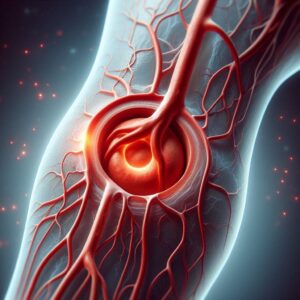What does it feel like to have a blood clot in your leg?
A blood clot in the leg, also known as deep vein thrombosis (DVT), can cause several noticeable symptoms:
- Pain: You may experience a persistent, cramping pain in your leg, typically in the calf or thigh.
- Swelling: The affected leg may become swollen, especially below the knee.
- Warmth: The skin over the affected area might feel warmer than surrounding areas.
- Redness: You may notice redness or discoloration on the skin of the affected leg.
- Tenderness: The area may be sensitive to touch.
- Difficulty walking: The pain and swelling can make it uncomfortable to put weight on the affected leg.
It’s important to note that some people with DVT may not experience any symptoms at all. If you suspect you have a blood clot in your leg, it’s crucial to seek medical attention immediately, as it can be a serious condition with potential complications like pulmonary embolism.
Would you like more information on the risk factors, prevention, or treatment of blood clots in the leg?
Risk Factors:
- Prolonged immobility (long flights, bed rest)
- Recent surgery or injury
- Obesity
- Smoking
- Pregnancy or recent childbirth
- Hormonal birth control or hormone replacement therapy
- Age (over 60)
- Family history of blood clots
- Certain medical conditions (cancer, heart failure, inflammatory bowel disease)
Prevention:
- Stay active and exercise regularly
- Maintain a healthy weight
- Stay hydrated
- Avoid sitting for long periods (take breaks to walk around)
- Wear compression stockings if recommended by your doctor
- Quit smoking
- Manage underlying health conditions
Treatment:
- Anticoagulant medications (blood thinners)
- Compression stockings to reduce swelling
- Elevation of the affected leg
- In severe cases, thrombolytic therapy (clot-busting drugs)
- Rarely, surgical removal of the clot
It’s crucial to follow your healthcare provider’s advice for prevention and treatment, especially if you’re at higher risk for DVT. Early detection and proper management can significantly reduce the risk of complications.

